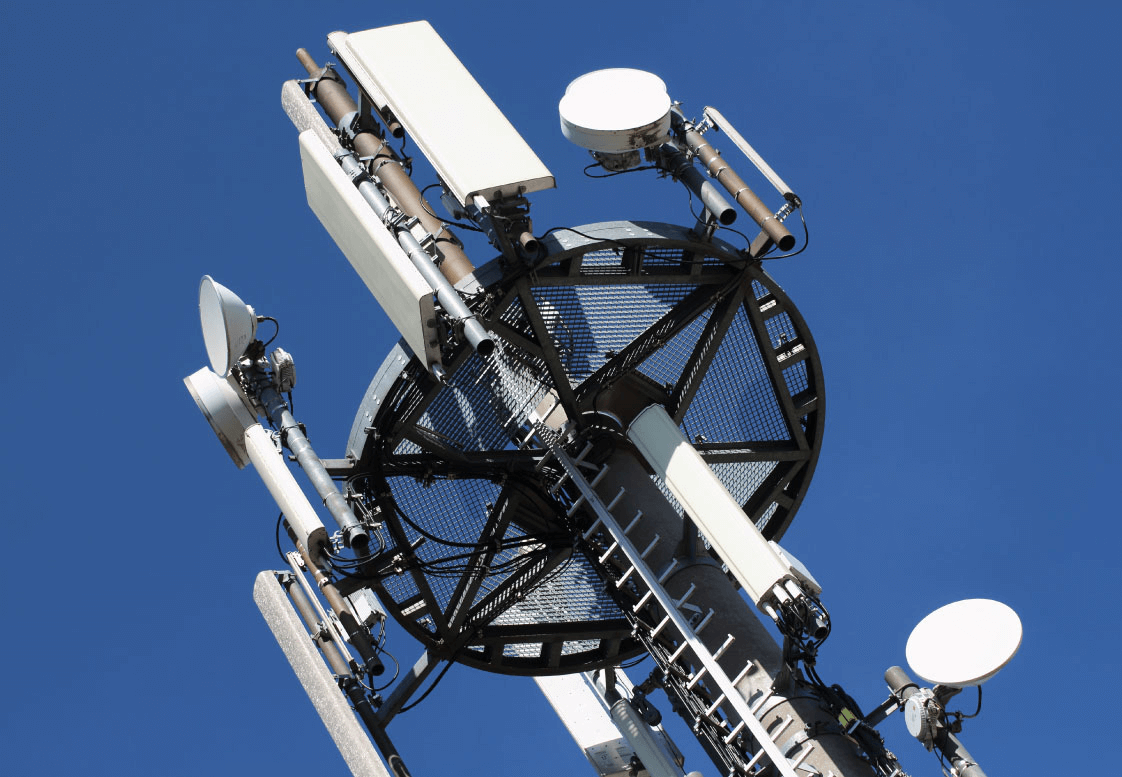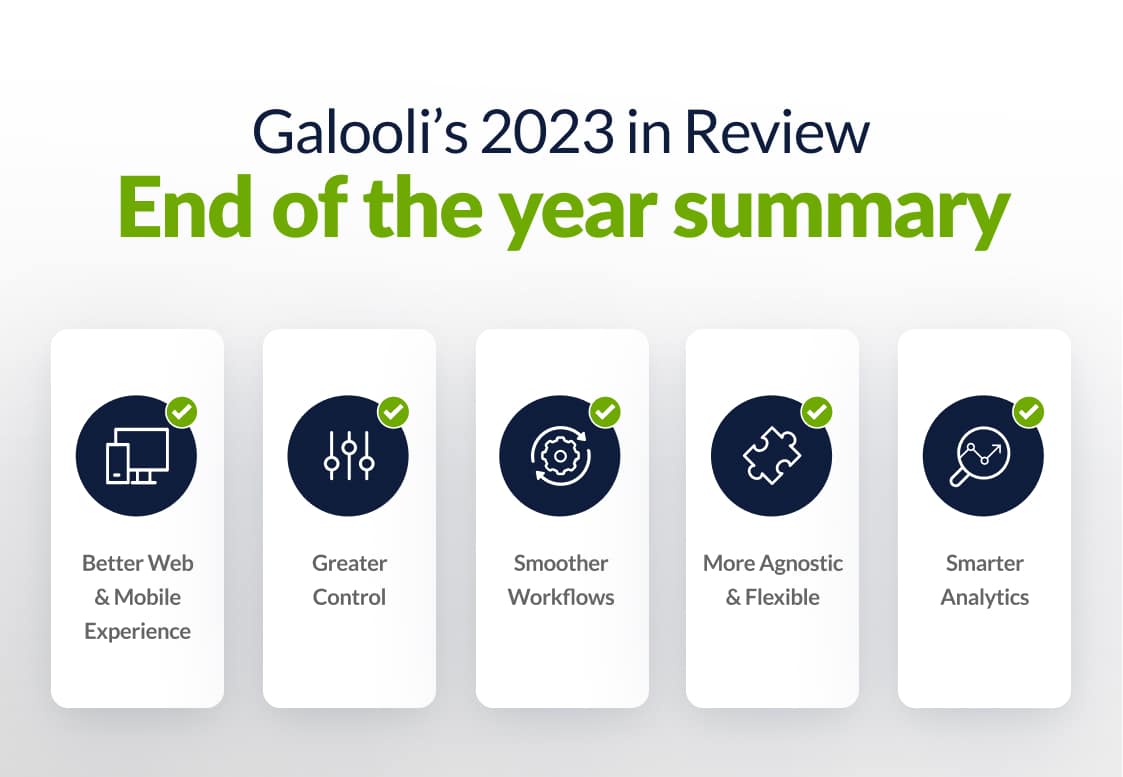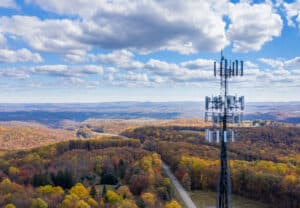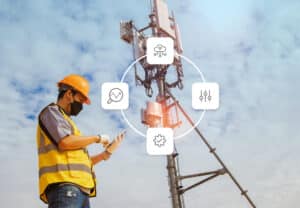
What is RAN?
A Radio Access Network (RAN) is a critical piece of telecom network infrastructure that connects wireless-enabled devices to other parts of a central public or private network. Simply put, the RAN is the radio component of a cellular network.
Cell phones, computers, and other connected devices send and receive radio signals from the RAN’s transceiver to connect to these “core networks.” These core networks manage and organize geolocation, subscriber information, and other network data.
Now let’s take a brief look at the parts that make up a RAN.
RAN component breakdown
A RAN is made up of several critical components: The Baseband Unit (BBU), Radios, Antenna, and a RAN Controller.
The antenna adapts electrical signals into transmissible radio frequencies. The radio receives and converts those radio waves into transmittable signals, which are then communicated to the BBU. The BBU is a piece of RAN hardware that processes and sends that signal information to the core network. Then the user receives the data in return via the process in reverse.
The RAN Controller is a more contemporary addition to 4G and now 5G networks, which controls the radio nodes essential to their function. For 4G, this involves an Evolved Packet Core (EPC), whereas 5G, in many cases, will require a Next-Generation Core (NG Core). These modern network cores help provides fluid network roaming and user management, among other functions.
So with that established, let’s take a look at how RAN has evolved.
Breaking down the different types of RAN
As network generations and RAN technology have evolved, a variety of iterations have been created to address the needs of faster, more data-intensive network operations. We’ve broken down these types of radio network implementations below in the order of their introduction.
GRAN
The Global System for Mobiles RAN (GRAN) uses traditional telecom base stations and controllers to transmit and manage their connections to radio nodes.
GERAN
GSM Edge RAN (GERAN) improved upon the older RAN generation and provided faster upload/download rates, more stable VoIP, and a consistent connection to the most relevant base station.
UTRAN
The UMTS Terrestrial RAN (UTRAN) is directly in charge of interconnecting wireless-enabled devices and equipment with the core network. This version of RAN was more commonly known as 3G publicly and brought with it the technology for the first generation of smartphones.
E-UTRAN
LTE UTRAN (E-UTRAN) provided significantly higher data transmission rates, reduced network latency, and optimized information transfer for packet data. It also used a new form of digital signal modulation that helped improve interference greatly. E-UTRAN was also capable of supporting devices moving at variable speeds, from a crawl to over 500 kilometers per hour.
C-RAN
Centralized, or Cloud RAN (C-RAN), is a flexible RAN solution that provides full functionality but via a generic cloud platform instead of purpose-specific hardware. C-RAN splits the BBU into a remote distributed unit (DU) and a central control unit (CU).
This allows C-RAN-based networks to transmit over significantly longer distances in a stable manner. It was also the first RAN generation to utilize cloud technology and IT infrastructure to improve reliability, coverage range, and network capacity.
Open RAN
Open Radio Access Network (O-RAN) is a very new concept that has started to gain traction with a selection of telecom industry enterprises. The idea is to create an open-source standard for RAN interfaces that focuses on cost reduction and operational flexibility. RAN up until now has remained vendor-specific, so this concept would reduce the cost surrounding RAN implementation and upgrading considerably.
5G, Energy Efficiency, and a RAN walk into a bar…
One of the most significant challenges for 5G deployments is the increased density of base stations required to achieve a stable signal. Base stations comprise 60% of the total power consumption of a cellular network, and the RAN uses a great deal of that. Even with energy efficiency optimizations built into 5G technology from its core, there needs to be a conscious effort for network and site operators to improve their efficiency.
The most direct way to accomplish this is the widespread adoption of Open RAN technology and standards. One perfect example is the world’s first O-RAN project Dish Network is deploying in Las Vegas. Instead of adding 5G technology to existing base stations, they are relying on open radio access architecture and 5G-optimized infrastructure to ensure the most effective and efficient deployment.
The operational and energy cost attributed to this new network generation is expected to drop by 40% through endeavors like these.


























